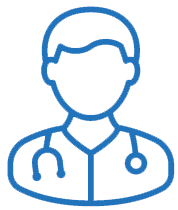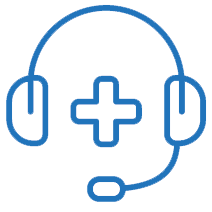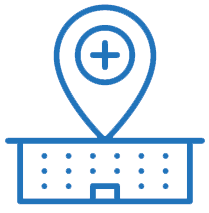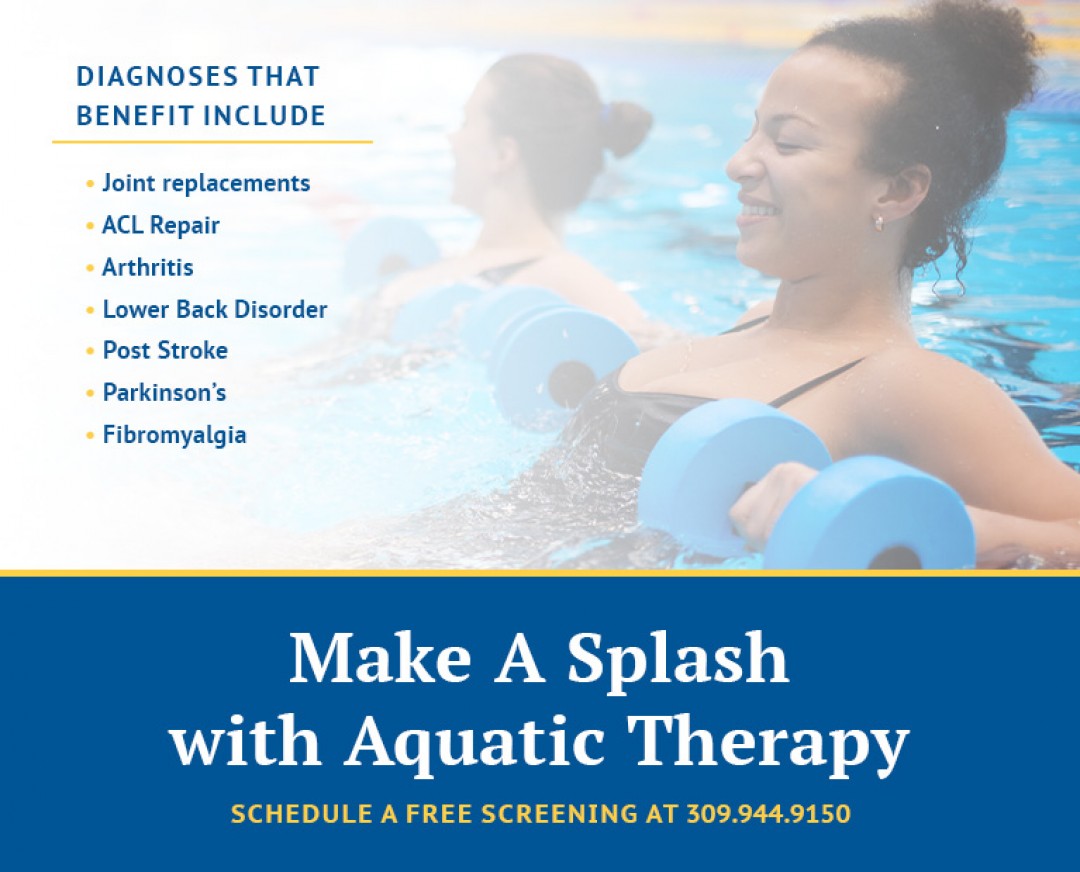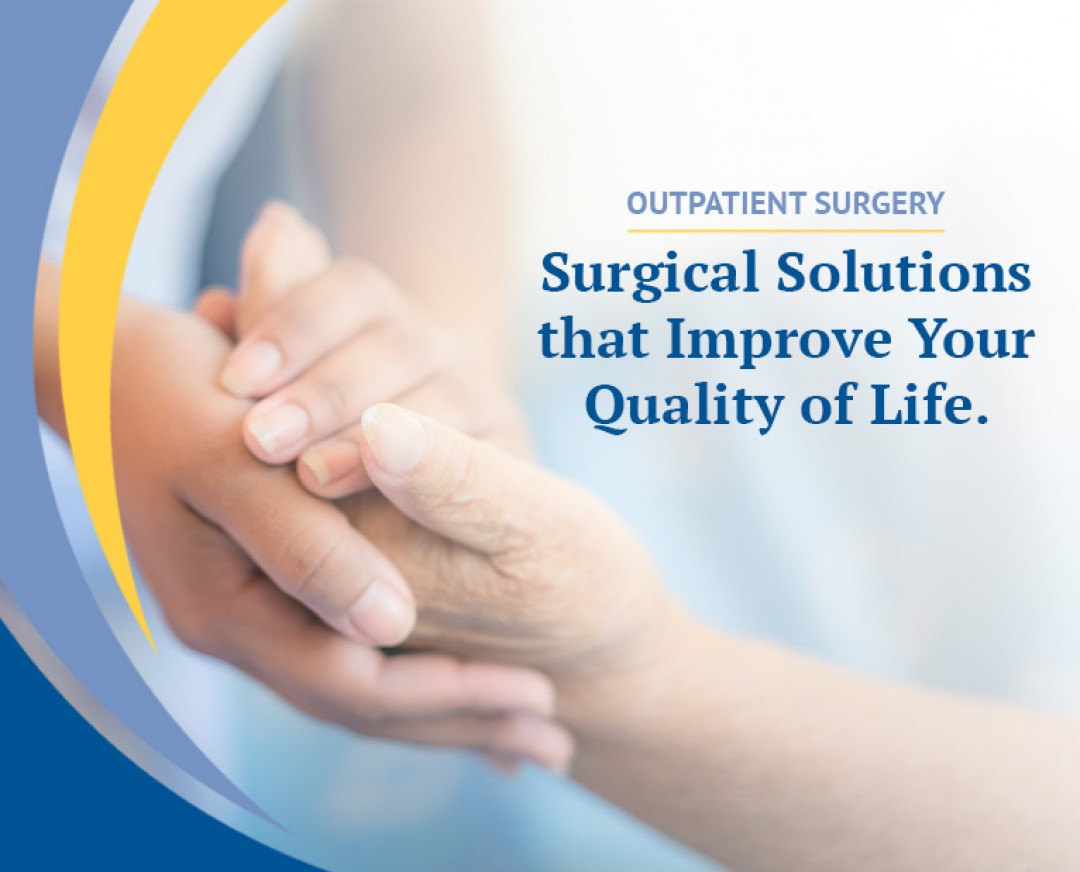Imaging Services
The road to full recovery starts with accurate diagnostic testing. With highly advanced, fully digital imaging equipment, the certified radiologic technologists at the Hammond-Henry Hospital Imaging Department are here for you. We are staffed 24 hours a day with testing available for those unplanned events life may have in store. With a compassionate, knowledgeable, and friendly staff, we’re here to deliver fast and accurate results to the emergency physician or your provider to begin your path to recovery.
What is radiology?
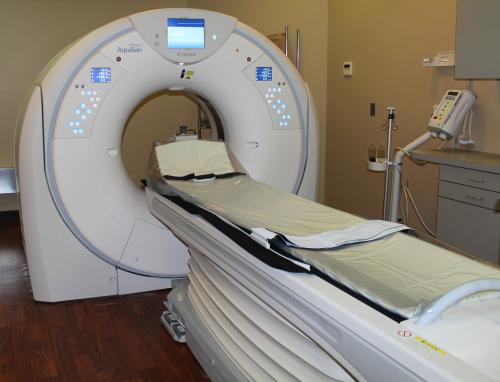 The human body is complex. Radiology uses radiant energy to produce images of the body without invasive procedures, meaning they do not penetrate the skin. These images are then used to diagnose an injury, illness, or condition. Different body parts require different testing. Our tests include:
The human body is complex. Radiology uses radiant energy to produce images of the body without invasive procedures, meaning they do not penetrate the skin. These images are then used to diagnose an injury, illness, or condition. Different body parts require different testing. Our tests include:
- General Radiology (x-ray)
- CT Scan
- Ultrasound
- MRI
- Nuclear Testing
- Echocardiogram
- Bone Densitometry
- 3D Mammogram
Who reads my test?
After your tests are administered, they are read by a radiologist, a doctor who specializes in diagnosing and treating conditions using medical imaging techniques. We partner with Advanced Radiology, SC, a group of 17 board-certified radiologists located in Quad Cities that views test results both in-house and remotely. Because of this partnership, you may receive a bill from Advanced Radiology, SC after your testing is complete.
Do I need a doctor's order to get a test?
Our tests do require an order from your healthcare provider. There is one exception — if you would like a mammography screening, call (309) 944-9135 to schedule an appointment.
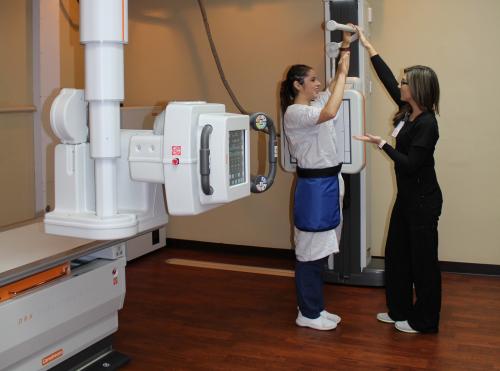 What is a digital x-ray?
What is a digital x-ray?
The digital X-ray test is the same as X-rays of the past. However, now you will be exposed to less radiation and have shorter exam times. The difference behind the scenes? Your X-ray is no longer viewed on film — it’s now a digital file that can be viewed quickly and sent to your provider in a much shorter timeframe.
What is a CT Scan?
Imagine a loaf of bread — you can see it as a whole, but you can also cut it and inspect it slice by slice. That is what a CT scan does, showing muscle, bone, or soft tissue in a 32-sliced image (cross-section) to help diagnose tumors, strokes, and abdominal and bowel disorders. It can also detect the stage of the disease.
The Hammond-Henry Hospital CT scanner provides a faster, safer, and more comfortable screening than ever before. A few benefits include:
- Lower dose with higher contrast display
- Real-time imaging at 12 frames per second, allowing the operator to rapidly assess if additional images are needed
- More precise image data
- A couch that supports up to 450 pounds and taller patients
What is an ultrasound?
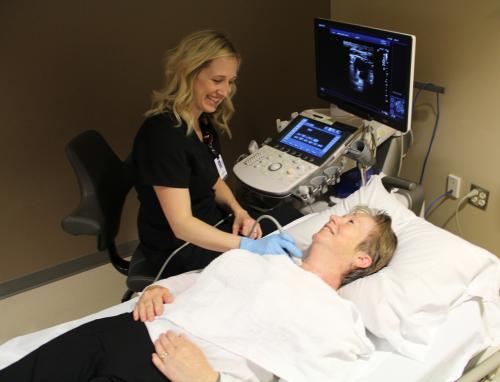 An ultrasound scan is a medical test that uses high-frequency soundwaves to capture live images from inside the body. The soundwaves create an image of the body and are viewed on a television screen. Using state-of-the-art ultrasound equipment, we can provide superior image quality to detect problems with organs, vessels, and tissues no incision needed. Because ultrasound uses no radiation, it is the preferred method for viewing a developing fetus during pregnancy.
An ultrasound scan is a medical test that uses high-frequency soundwaves to capture live images from inside the body. The soundwaves create an image of the body and are viewed on a television screen. Using state-of-the-art ultrasound equipment, we can provide superior image quality to detect problems with organs, vessels, and tissues no incision needed. Because ultrasound uses no radiation, it is the preferred method for viewing a developing fetus during pregnancy.
What is an MRI?
MRI (magnetic resonance imaging) uses a strong, magnetic field and radio waves to produce computer-processed images of your body. Unlike X-rays or CT scans, MRI does not require the use of ionizing radiation. There is no pain, discomfort, or known side effects.
Many wonder, “Can I have an MRI if I have an implant?” In most cases, yes. All joint replacements and orthopedic screws are fine six weeks after surgery. Stents and implanted stimulators need to be evaluated on an individual basis. Patients should bring all implant cards to the appointment. Before your appointment, remember:
- You will be provided scrubs to wear.
- Remove ALL jewelry, including piercings.
- You will be asked to remove glasses, hearing aids, and removable dental work prior to the exam.
- You may bring MP3 players, iPods, or a phone playlist to listen to during the exam.
The Choice Is Yours
You have a choice when it comes to scheduling your MRI — regardless of the facility your physician chooses. So, schedule with the local providers who know you best. Hammond-Henry Hospital offers state-of-the-art MRI services with testing in days versus weeks, faster and clearer scans, and testing conducted by expert technologists who care about our community because they are a part of the community.
Set in a local, low-stress environment, our technologists are committed to treating you like family, caring about your comfort both emotionally and physically.
About the Canon Vantage Orian 1.5T
This cutting-edge 1.5T magnet, coupled with new software, gives our imaging the incredible, equivalent clarity of a 3T magnet. Scans are faster and much clearer — brain scans, for example, can be effectively completed in about a half-hour. Additionally, the Vantage Orian 1.5T provides enhanced patient comfort with a larger opening.
What is nuclear medicine?
Nuclear medicine is a safe and painless procedure that uses small amounts of specially formulated radioactive materials (tracers) to help diagnose and treat a variety of disease. With this type of testing, we can examine the following bodily functions:
- Endocrine system
- Hematopoietic and lymphatic systems
- Gastrointestinal system
- Musculoskeletal system
- Cardiovascular system
- Genitourinary system
What is a low dose lung cancer screening?
If you are at risk for lung cancer, you may be eligible for a low-dose CT scan. If you are between the ages of 55-77 years old, have smoked an average of one pack of cigarettes per day for the past 30 years, and are a current smoker or have quit within the past 15 years, you should consult your healthcare provider to discuss the need for this test. Research shows this screening can help detect early lung cancer before clinical signs or symptoms become evident.
What is an echocardiogram?
An echocardiogram is a picture of the heart. It tests the action of the heart using ultrasound waves to produce a visual display. It is used for the diagnosis or monitoring of heart disease. Echocardiograms can be performed on a person of any age.
How do I prepare for my test?
Just as the tests we offer are varied, so is the prep for each test. If you have specific questions regarding your test, we are happy to speak with you about your preparation. Call us at (309) 944-9135 and we can assist you.


